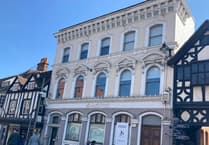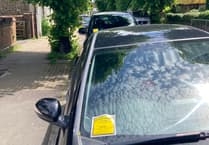A TREASURE hunter who discovered the famous Alton Hoard is challenging the British Museum who, he says, may have been “mistaken” over the original valuation.
Peter Beasley, a metal detector fan from Waterlooville, and his friend, Peter Murphy, dug up the hoard in a field at Privett, near Alton, in March 1996.
Together with the farmer on whose land the hoard was found, they received £103,000 for the find – less than half the £256,000 experts believe it was worth.
According to Mr Beasley, the trio were entitled to the “historical value” but they are now led to believe that this sum fell far short of that, and they are urging Prime Minister Teresa May to trigger a review.
Declared ‘treasure trove’ at an inquest at Alton Magistrates’ Court in May 1996, the hoard itself consisted of 256 Celtic stater coins of pure gold, as well as a solid gold arm torque and a Roman Caesar ring – estimated by academics to be some of the oldest Roman jewellery ever found in this country.
Proud that the coins themselves are on display in the British Museum, Mr Beasley, 75, now believes that he and his colleagues may have been the victims, perhaps unwittingly, of a serious under-valuation.
At the time, the Alton Herald reported that British Museum coin expert Roger Bland had called the find “one of the most interesting ever discovered” and one which threw fresh light on trading links between the Celts and the Romans. While initial estimates of value ran into hundreds of thousands of pounds, it was reported that the British Museum were playing down the value, with Mr Bland suggesting “a more realistic figure”, possibly just reaching six figures.
Once a valuation was agreed, the British Museum then had to bid for outside grants to buy the haul.
While conscious that the museum may have found it difficult to raise enough money to buy the hoard, Mr Beasley now believes he and Mr Murphy may have been the victims of “debunking” – a bid to play down the importance of the find to repress the value.
Twenty years later, and having grown in knowledge and experience, he is determined to find the truth.
“It is not about the money but the principle,” he said.
A bricklayer by trade, Mr Beasley’s interest in archaeology was triggered when working on a site next to the Roman Palace at Fishbourne, near Chichester, where he was picking up “beautiful pottery shards” and his brother, Steve, found the apex stone that would have adorned the main entrance to the palace.
As a result, he spent five years working in the archaeology department of West Sussex County Council where he was trained by well-know archaeologists Alec Down and Dr James Kenny.
On his return to the construction industry, Mr Beasley developed a passion for treasure hunting, “a wonderful hobby” which he has pursued ever since, his first major find being the Alton Hoard.
According to Mr Beasley, he and Mr Murphy had decided to survey the field based on the history of the area and the topography of the ground. Having received permission from the owner, they found shards of Celtic and early Roman pottery but their interest was really triggered when a coin popped up. “We put the detector over the hole and there were coins rolling around in there,” he said.
The pair went on to discover a hoard of coins, stamped with the name Tincomarus. A gold ring found in the Alton Hoard is believed to have been given to King Tincomarus by the Roman Emporer Augustus in the early 1st century AD.
Mr Beasley said: “Tincomarus ruled over the Iron Age Belgic tribe, the Atrebates, who were the main importers of Roman wine in Britain from the late 1st century BC to the early 1st century AD. Previously, Tincomarus was believed to have been named Tincommius, and was associated with the majority of the coins found in previous hoards.”
The Alton Hoard also included an arm torque that, he said, “had been bent inside out and included two small trumpets on each end”.
Research has since shown that a Roman-Egyptian bracelet, from the same period, had sold for £60,000 when auctioned at Sotheby’s in London, while a similar Roman gold ring fetched £11,727 earlier this year at Bonham’s. However, the Alton Hoard jewellery only sold for £4,550 (£1,650 for the torque and £2,900 for the ring).
Mr Beasley added: “The ring was almost identical to the ring given to King Herod by Augustus in order to give permission to rule over Israel in the name of the Roman Empire.”
It is an anomaly that has raised alarm bells for Mr Beasley who, having witnessed the demise of some of the experts responsible for handling the Alton Hoard, now believes that it may have been grossly undervalued.
In a statement, the British Museum has pointed out that once a ‘find’ has been declared treasure by the coroner it is provisionally valued by one or more independent expert valuers before going before an independent treasure valuation committee who then recommend a value for the find. The finder(s) and the landowner are asked whether they are satisfied with the valuation and the museum is invoiced for the recommended amount, which it is asked to pay within four months. Upon release of the money, the find is released to the museum.
Mr Beasley is pictured with a selection of artefacts from the Alton Hoard, currently on loan to the Winchester Discovery Centre.





Comments
This article has no comments yet. Be the first to leave a comment.